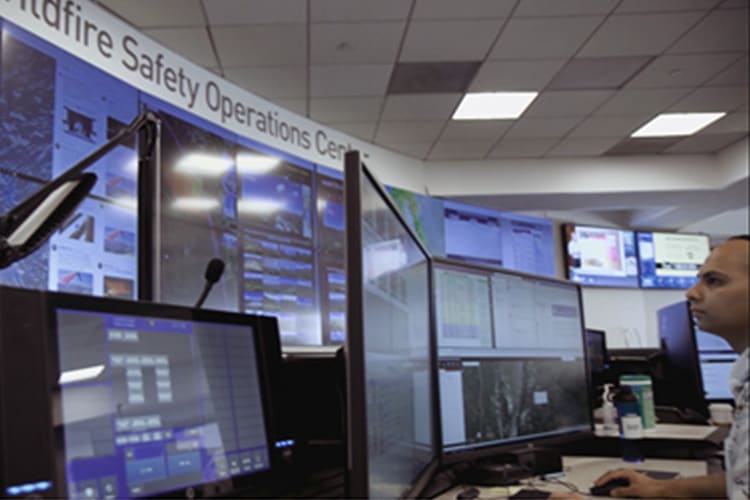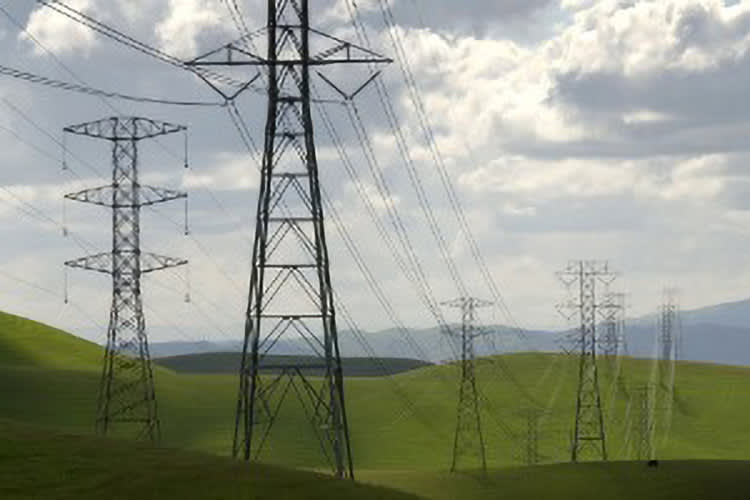VIDEO: Meet the First Female Graduate of PG&E’s Gas Control Technician Apprenticeship Program
By Tony Khing
The Great Recession of 2008 changed many lives, including Janie Johnson’s.
For 10 years, Johnson ran a pet waste disposal business in Sacramento. But the economic downturn caused many clients to cancel their weekly clean-ups. As her business was dwindling, Johnson took a job in PG&E’s call center. Two years later, she became a utility worker and got familiar with the company’s Gas Operations department.
 Janie Johnson started in PG&E's call center before she became the first female graduate of the Gas Control Technician apprenticeship program. (Photo by Tony Khing.)
Janie Johnson started in PG&E's call center before she became the first female graduate of the Gas Control Technician apprenticeship program. (Photo by Tony Khing.)That’s where Johnson learned about being a gas control technician. They’re the ones who, working 24/7, control the safe transport of natural gas under pressure through approximately 6,600 miles of transmission lines, 42,700 miles of distribution pipelines and 4.3 million meters.
She saw what they did while working in PG&E’s Transmission Pipeline Clearance Operations department. “I thought to myself, ‘Wow, I could do that,’” she said.
Johnson was accepted into the Gas Control Technician Apprenticeship Program and nearly a year ago, after three years, this former U.S. Navy petty officer third class became the first female to graduate and has become one of only four women out of 200 people in that position.
“It’s one of the hardest jobs in the company,” said Robeh Eseed, a senior field training coordinator who had Johnson as one of his apprentices. “You have to know many different kinds of software, equipment and be able to respond in an emergency to keep our customers safe.”
“We regulate the gas transmission pressure,” said Johnson, now a journeyman based in Sacramento. “Your goal is to never lose customers or overpressure the line. Anything you do can have huge effects. You have to know what you’re doing. You can’t wing it.
“The responsibility of our job does blow my mind,” she added.
 "We regulate the gas transmission pressure. You have to know what you're doing." -- Janie Johnson (Photo by Tony Khing.)
"We regulate the gas transmission pressure. You have to know what you're doing." -- Janie Johnson (Photo by Tony Khing.)Over those three years, Johnson attended classes, received on-the-job training and had daily homework. The apprentices are challenged mentally and physically. They learn how to run programs such as SCADA (Supervisory Control and Data Acquisition) which allows a tech to monitor how gas is flowing throughout the entire system. They also receive experience in calibrating transmitters which control valve openings. And then there’s the physical aspect of turning valves by hand.
“The Gas Control Technician Apprenticeship isn’t easy,” said Eseed. “You’re going to school for three years with course work, getting on-the-job training and homework. This takes a lot of work.”
“Our training is difficult,” said Saul Martinez Jr., a technical training supervisor at PG&E’s Gas Safety Academy in Winters.
Johnson said she felt “a little overwhelmed at first with the sheer volume of information” she received. But Johnson also had 36 months to learn everything. “I just took the process step-by-step. I approached this new chapter of my life like I do everything. I just did whatever it took to succeed.”
Johnson’s attitude and dedication served her well during her apprenticeship.
“Janie was a role model,” said Curtis Tonetti, a superintendent of gas transmission and distribution pipeline operations and maintenance. “She was dedicated and committed. She got the highest scores when we did testing. The instructors said they wished all students were like her.”
“Janie definitely deserves credit for her hard work and dedication,” said Martinez. “She was never shy about asking questions and I was impressed with her dedication to learn. She will only get better as she progresses in her career.”
Johnson’s work ethic also gained her respect from her teammates and classmates. “Everyone works together,” she said. “I’ve been able to succeed because of the journeymen I work with. They’ve taken the time to explain everything to me.”
Being the only woman in the class and now one of four women gas control technicians aren’t concerns, either.
“I was an apprentice just like everyone else,” said Johnson. “We were all going through the same process with the same expectations. We don’t get treated differently. If anything, it’s knowing the job that earns you the respect and gender doesn’t really play that big of a role.”
Having passion also helps.
“I love what I do. I like the combination of the technical, electronic and physical parts. I get a sense of accomplishment when an inspection is done and everything’s working great,” said Johnson. “A good feeling of accomplishment.”
Email Currents at Currents@pge.com.
TOP STORIES
-
 PG&E Encouraging Eligible Customers To Sign Up for Monthly Energy Discount Program
PG&E Encouraging Eligible Customers To Sign Up for Monthly Energy Discount Program -
 PG&E Bolsters Safety by Implementing and Evolving Wildfire Mitigation Measures
PG&E Bolsters Safety by Implementing and Evolving Wildfire Mitigation Measures -
 'Climate Positive’ by 2050: PG&E’s New Climate Strategy Report Outlines Targets and Milestones on Path to Net Zero Emissions and Beyond
'Climate Positive’ by 2050: PG&E’s New Climate Strategy Report Outlines Targets and Milestones on Path to Net Zero Emissions and Beyond -
 As California’s Traditional Fire Season Starts, PG&E Turns on Enhanced Powerline Safety Settings Across All High Fire-Risk Areas
As California’s Traditional Fire Season Starts, PG&E Turns on Enhanced Powerline Safety Settings Across All High Fire-Risk Areas -
 Collaborating for a Clean Energy Future: California’s First 100% Renewable Multi-Customer Microgrid Is Now Operational
Collaborating for a Clean Energy Future: California’s First 100% Renewable Multi-Customer Microgrid Is Now Operational